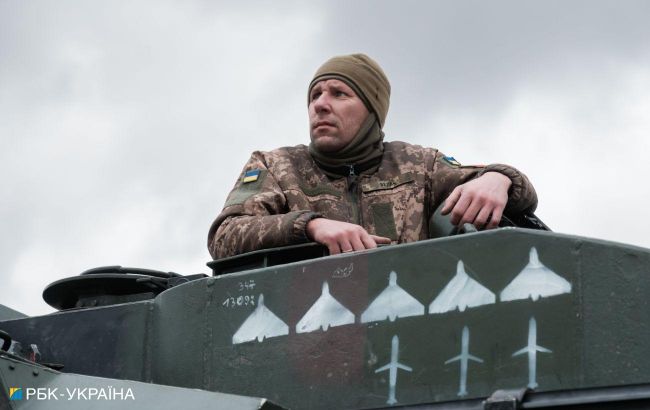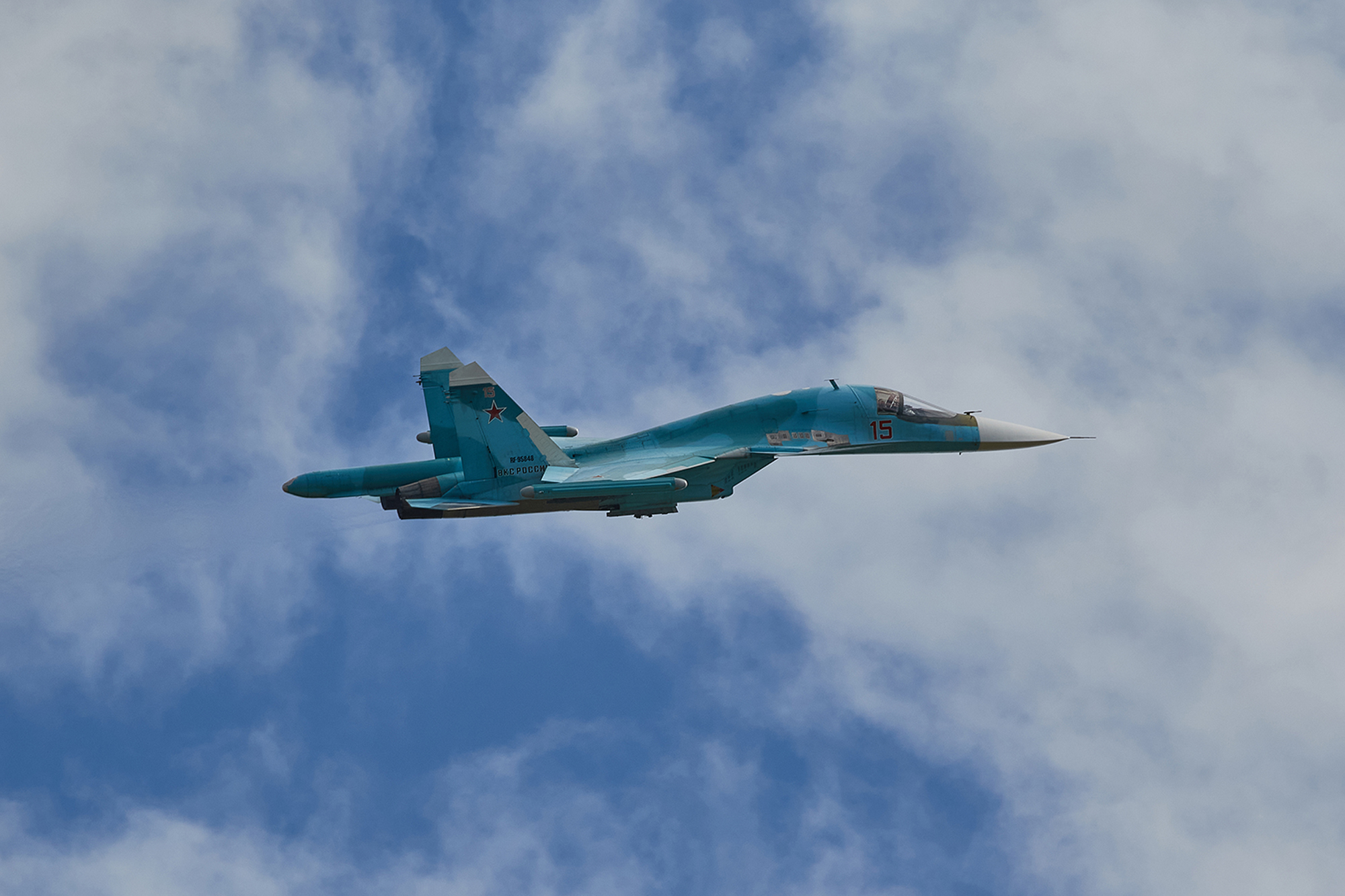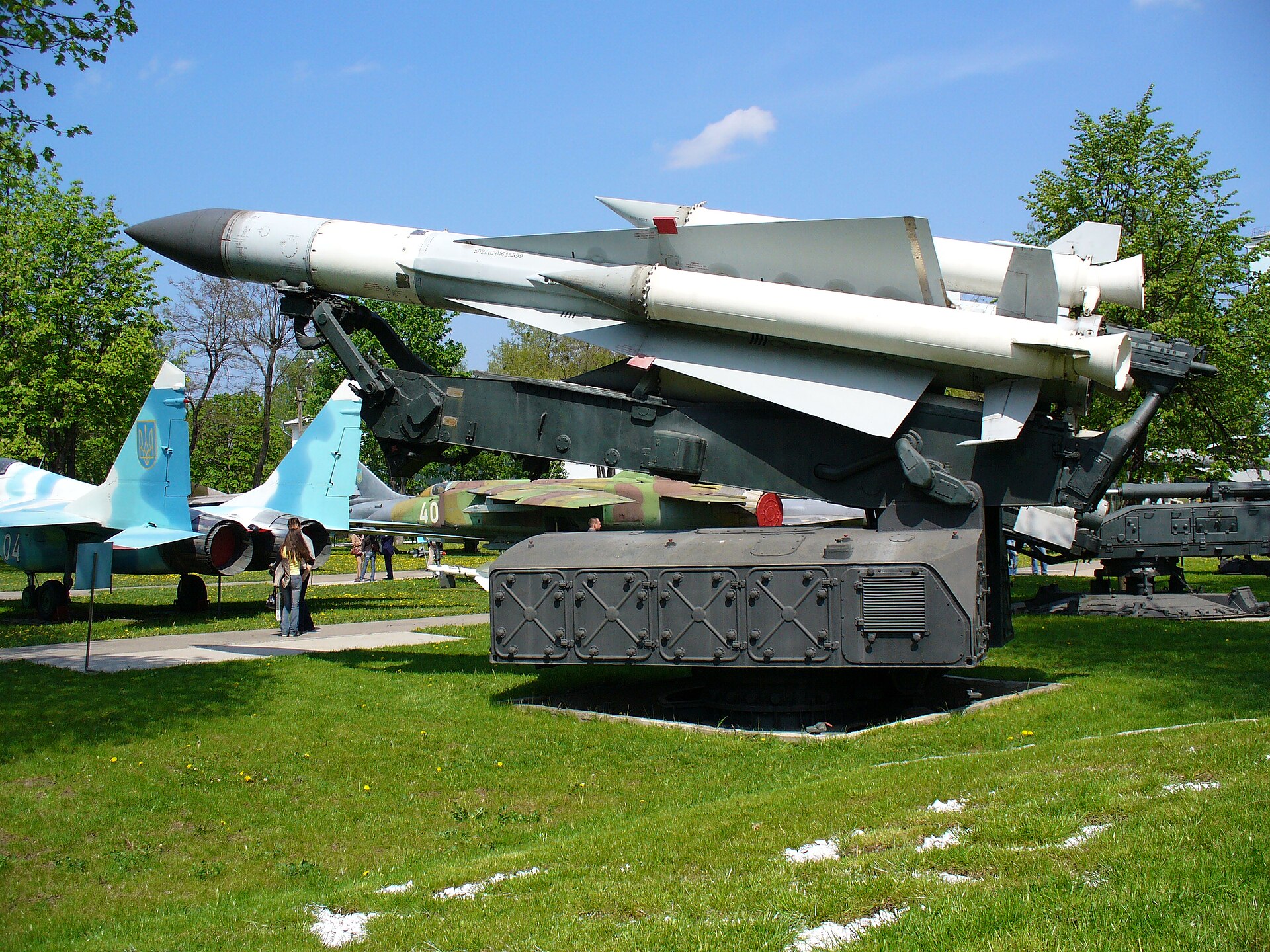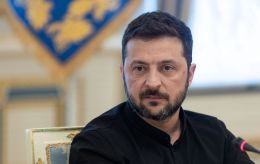Air battle: How Russia loses aircraft and whether Ukraine actually faces air defense issues
 Ukraine may have unknown powerful long-range air defense systems (photo: RBC-Ukraine, Vitalii Nosach)
Ukraine may have unknown powerful long-range air defense systems (photo: RBC-Ukraine, Vitalii Nosach)
Since February, Russia has lost more Su-34s than it produces in a year. In addition, A-50s and Su-35s have come under attack. The article by RBC-Ukraine explains how Ukraine manages to hit Russian aircraft, what Ukraine's air defense system is like, how many missiles Moscow produces, and how many it could have received from the DPRK.
Sources used: comments by Yurii Ihnat, a spokesperson for the Ukrainian Air Force, aviation expert Kostiantyn Kryvolap, Defense Express, and conversations with representatives of the Ukrainian Defense Forces on condition of anonymity.
The Ukrainian Defense Forces have launched a hunt for Russian aircraft attacking Ukrainian positions near the front line. Since mid-February, Russia has lost over a dozen Su-34 fighter-bombers, which is more than the Russian army received in all of 2023. It is this type of Su-aircraft that the Russians mostly use to drop guided aerial bombs (GABs).
After all, this is not the entire list of destroyed aircraft of the Russian army. Since the beginning of the year, it has lost at least two more Su-35 fighter jets, one of Russia's most modern, and two more rare A-50 stealth aircraft, which were hit at a distance previously considered unattainable for Ukraine.
This gave rise to many versions and discussions: what Ukraine uses to shoot down these planes, and whether our air defense situation is as critical as several Western media outlets have reported.
Russian aircraft falling
Russians began to actively use GABs in the frontline areas around mid-spring last year. These are converted conventional Soviet-era aircraft bombs that have a guidance system and carry hundreds of kilograms of explosives. So they are very destructive.
Since the fall, Russia has significantly increased the use of GABs along the entire front line, with Avdiivka being the most affected. The enemy managed to capture this city, not least because it destroyed all the available fortifications of Ukrainian troops with bombs.
A source in the Ukrainian intelligence services says that as recently as May last year, the Russians were dropping a total of about 25 GABs per day, but since then they have gradually increased their use. Now the enemy launches at least 60 GABs daily, sometimes their number reaches or even exceeds a hundred.
"In the second half of last year, according to their orders, the enemy planned to launch 100 GABs a day. According to our data, the enemy plans to restore and produce about 10,000 units of such guided bombs per year," an informed source says.
 Su-34 fighter jet (photo: GettyImages)
Su-34 fighter jet (photo: GettyImages)
There are no completely effective ways to intercept these GABs. The solution is to shoot down their carriers - various types of Su. But given that the flight range of these guided bombs from the launch site to the target is 40 to 70 kilometers, Russian fighters have long remained out of reach of Ukrainian air defense. The aircraft simply flew at a distance that kept them out of the range of Ukrainian anti-aircraft missile systems and hit our positions near the front line. However, since February, Russia has been rapidly losing planes: from February 17 to March 2, 12 Su-34s and 2 Su-35s were hit.
"These Su were hit in particular in the Donetsk, Mariupol, and southern directions. They strike at a distance of about 50 kilometers from the combat line, and a guided aerial bomb generally flies about 70 kilometers. The closer they fly, the further they can drop the bomb on Ukrainian positions. But the closer they fly, the more they risk getting into the area of our air defense," Yurii Ihnat, a spokesperson for the Ukrainian Air Force, tells RBC-Ukraine.
Both the Su-34 fighter-bomber and the Su-35 multi-role fighter usually fly as part of a strike group. Usually, the Su-34 drops the strike group, Ignat says, and the Su-35 provides cover, although it is also capable of using various types of weapons, including guided bombs. These fighters can also launch Kh-59 missiles, which the Russians use to strike targets up to 285 kilometers away, and Kh-31P anti-radar missiles.
"In addition, helicopters periodically work with them to set up radio jammers. Su-34s usually fly with two bombs. They are used in different directions - in the northeast, east, and south - to launch strikes," Ihnat says.
The main objective of the operations to shoot down the Su is to reduce the intensity of the use of GABs. This, in turn, should ease the situation of Ukrainian troops in conditions when the Russian occupiers seek to develop their offensive and push forward. After all, without the GABs, the enemy is unable to either actively attack or maintain defense.
Now the Russians have indeed begun to use GABs somewhat less, but this change is not yet very significant, a source in the special services admits. On the one hand, in two weeks, the Ukrainian army hit almost a year's worth of production of their carrier aircraft. According to open data, in 2023, the Russian occupation forces received 6 Su-34s and 10 Su-35s, while in 2022 the figures were about the same. But the Russians still have a lot of them.
"In particular, Russia has about 100 Su-34s and somewhat less - up to 100 Su-35s. The enemy has planned to produce 34 combat aircraft this year. Most of them are Su-34s and Su-30s, another type of multi-role fighter. Accordingly, operations against Russian aviation will continue," says a source in the special services.
Since January, Russia has lost two more - rarer aircraft - A-50U surveillance aircraft that regularly conducted aerial reconnaissance in the Azov Sea. One on January 14, the other on February 23. In the fall and winter of 2022-2023, this type of aircraft regularly took off in pairs with Mig-31Ks over the territory of Belarus. But after the guerrillas damaged the A-50 at the Machulishchi airfield, it was allegedly taken from there to Russia for repairs.
 Ukraine is demonstrating to Russia that it can use its air defense systems to reach the enemy's tactical aircraft at the front (photo: armyinform)
Ukraine is demonstrating to Russia that it can use its air defense systems to reach the enemy's tactical aircraft at the front (photo: armyinform)
The main function of this aircraft is to detect aircraft and reconnoiter the location of radar systems and air defense systems, as well as cruise missiles. It can scan the sky at a range of 500-600 kilometers.
"According to our data, the Russians have 5 serviceable A-50s and A-50Us in their arsenal that can perform the tasks. But after the second A-50 was shot down, they no longer fly near Ukraine," a source in the special services tells the agency.
It is likely that after the destruction of two such aircraft, Russia's tactical aviation has become more vulnerable. Now, the Russians have been forced to replace their surveillance equipment - they have recently increased the activity and depth of reconnaissance drones, and Su-24MRs have begun to appear in the sky more often.
What about Ukrainian air defense
It is unlikely that the Ukrainian Defense Forces are capable of destroying Russia's entire combat aircraft fleet. The main goal is to demonstrate that Ukrainian troops have the means to reach Russian aircraft from both the Kharkiv and Kherson regions and that each flight could be their last. The situation was roughly the same in the first month and a half of the large-scale invasion. After the Russian losses in aviation crossed a painful threshold, they stopped flying deep into Ukrainian territory.
What kind of means they used remains a matter of debate. It could have been either one of the "traveling" Patriot systems or one of the hybrid Patriot + S-300 radar systems within the FrankenSAM project.
"We have enough radars for the S-300, but we need more launchers and anti-aircraft missiles for them. Instead, the FrankenSAM project uses Patriot launchers for them. It can be assumed that these "driers" were shot down by such a hybrid system since the Patriot locator signature is very different from the S-300 locator signature. And if the Russians saw the signature from the S-300 radar, they would have less fear of flying up, because the S-300 system alone would not have reached them," suggests aviation expert Kostiantyn Kryvolap.
As for the A-50 operations, there are even more questions, as these aircraft were hit at the maximum range of the Patriot. Moreover, they were hit on the condition that they were brought directly to the front line, which is extremely risky. Two sources in the Ukrainian Defense Forces say that the A-50 was hit by the Soviet S-200 system, which has a range of 300 kilometers.
 S-200 air defense system in the Air Force Museum (photo: Wikipedia)
S-200 air defense system in the Air Force Museum (photo: Wikipedia)
The S-200 system is one of the best developments of the 1960s, says Kryvolap. Although it is considered a mobile system, it is far from being so. Rather, it can be called a transportable complex.
"When they start transporting it somewhere, it looks like a whole caravan - about 13 units of different vehicles. In addition, there are concrete blocks that need to be placed on the site from which the launch will be carried out. And to load the missile into the launcher, they even lay railroad tracks there," the expert says. According to him, the time to deploy such a complex is 24 hours according to Soviet standards. The time to roll it up will be about the same, so it is not able to quickly leave the launch site and hide.
"That's why it remains a mystery to us how enemy aircraft, including A-50s, are shot down. Perhaps we have some new weapon based on principles and technologies that are already known but not used before," Kryvolap says.
Such operations indicate that the information disseminated by several Western media outlets since January about a critical shortage of missiles for air defense systems in Ukraine is somewhat exaggerated. After all, despite the slowdown in the allocation of aid in Congress, the United States is not the only supplier of anti-aircraft missiles for air defense, including Patriot. It is worth mentioning that at least two of these systems were transferred to Ukraine from Germany. And even if the information about the alleged destruction of two Patriot launchers in the East, which was reported by several military observers and Russian media, is confirmed, it is a case of damage to individual launchers, not the entire system: this loss will be painful, but not catastrophic. So far, all the photos that have been circulating online as confirmation have shown only wrecked German trucks. In addition, the Ukrainian Air Force has other medium-range systems that came from partners in Europe.
Secondly, after several massive missile attacks on the rear areas in December and January, Russia was forced to reduce the frequency and intensity of its attacks. This has also reduced the burden on our air defense and the dynamics of anti-aircraft missile consumption. The agency's sources in the intelligence services believe that in February, the Russians tried to replenish their missile stockpile. If we talk, for example, about such models as the Kh-101, in December and January they were fired in volumes equal to four months of their production.
A source in the intelligence services says that since January, Russia has not been able to increase missile production. According to the source, Russia is currently producing about 130 strategic missiles per month with a range of more than 350 kilometers.
As for the North Korean KN-23/24 ballistic missiles that were spotted during the winter shelling, the data on their number handed over to Moscow varies. However, according to interlocutors in the Defense Forces, these are small volumes of supplies.
"Some of our partners provided us with data on the transfer of 45 missiles from the DPRK, while others said 60. However, we have doubts about these figures. In particular, we were also told about Pyongyang's transfer of seven launchers for these missiles. So far, we have recorded only one," says one of the sources. It also adds that as of today, Russia's other partner, with whom it has also been negotiating ballistic missiles, Iran, has not provided it with these weapons.
However, Iran continues to cooperate with Moscow in the production of Shaheds. According to the Defense Intelligence of Ukraine's January estimate, Russia assembles about 350 of these UAVs per month. Such volumes allow the aggressor to maintain the regularity and scale of attacks on Ukrainian territory. For example, in February, Russia launched about 380 Shaheds. However, anti-aircraft missiles are now used much less frequently to shoot them down.
"Of course, we have a shortage of anti-aircraft missiles for air defense systems. Our authorities are constantly appealing to representatives of partner countries about the need for both additional systems and missiles. We use them both to shoot down cruise missiles and to repel attacks by Russian aircraft with guided bombs. Although the vast majority of drones are now being shot down by mobile firing groups, short-range air defense systems, man-portable air defense systems, and anti-aircraft guns," says Ihnat.

